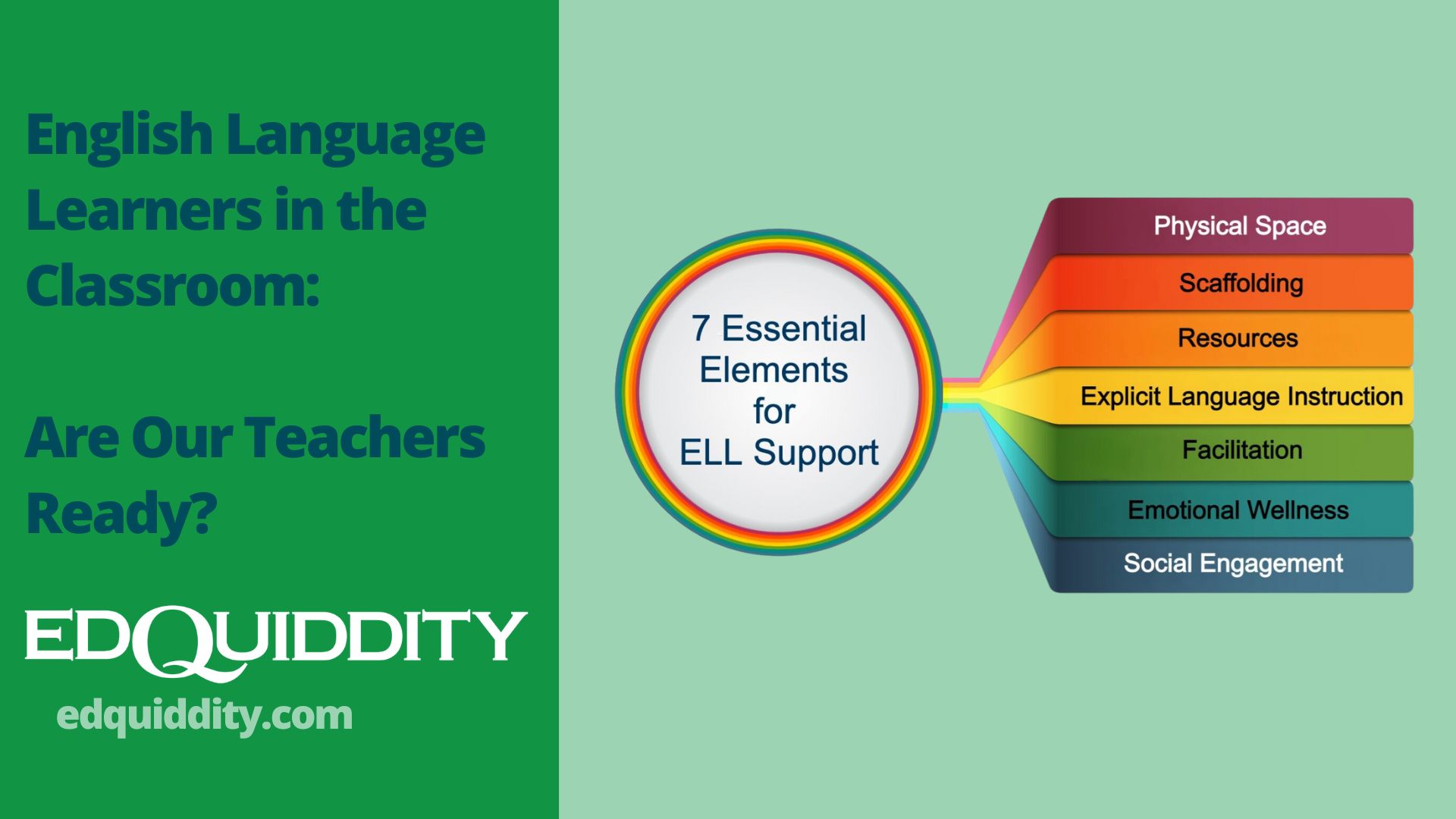The Rising Population of English Language Learners
As we look toward the future of education, one alarming statistic stands out: “By 2025, 1 out of 4 children in classrooms across the nation will be an English Language Learner (ELL) student” (NEA). This presents a significant challenge for educators striving to provide effective instruction for students from diverse linguistic backgrounds. The demographic landscape of classrooms is rapidly changing, with the number of English Language Learners steadily increasing year by year. As a result, educators are faced with the task of meeting the diverse needs of students who may be at varying levels of English proficiency.

Teachers Being Equipped to Support Their English Language Learners
Classroom teachers must be equipped with the necessary knowledge, skills, and resources to individualize instruction and making learning accessible to all. This includes understanding the stages of language acquisition, implementing culturally responsive teaching practices, and utilizing appropriate instructional strategies for ELLs. IDE Corp., EdQuiddity’s sister company, established the 7 Essential Elements for ELL Support to assist schools in reaching each learner and providing educators with structures and strategies to help ELLs thrive in the classroom.

ESSER Funds and Supporting English Language Learners
ESSER funds have been granted to schools to support academic recovery and to address the diverse needs of our student population. These funds can be used to provide educators with support to meet the unique needs of English Language Learners. Investing in ELL support not only aids in language proficiency, but also promotes inclusivity and diversity in our schools.

Our Professional Learning Experience Can Support Your District
Our Professional Learning Experience (PLE) is designed to address the unique needs of districts seeking to better support their ELLs. Our program offers a comprehensive approach to professional development, equipping educators with ready-to-implement strategies that align with the 7 Essential Elements for ELL Support in the classroom. From fostering a welcoming and inclusive classroom environment to providing differentiated instruction tailored to individual student needs, our PLE empowers teachers to effectively meet the needs of their ELLs. Take proactive steps to ensure that your teachers are prepared to support all students, regardless of their linguistic background. Together, we can create inclusive learning environments where all students have the opportunity to thrive.



 In this course, participants will leverage choice and technology to provide students with the ultimate differentiated learning environment. They will develop differentiated digital activity lists rooted in rigorous instruction that offer multiple ways to learn and apply content. Participants will explore autonomy, purpose, and mastery as motivators in all learning environments. They will design differentiated activity lists to put students in charge of their own learning, creating a structure that allows students to make decisions within a structured framework. Making informed decisions is an essential life skill that teachers can support with intentional classroom practices.
In this course, participants will leverage choice and technology to provide students with the ultimate differentiated learning environment. They will develop differentiated digital activity lists rooted in rigorous instruction that offer multiple ways to learn and apply content. Participants will explore autonomy, purpose, and mastery as motivators in all learning environments. They will design differentiated activity lists to put students in charge of their own learning, creating a structure that allows students to make decisions within a structured framework. Making informed decisions is an essential life skill that teachers can support with intentional classroom practices. Participants in this course will use Reinventing the Classroom Experience by Dr. Nancy Sulla as a resource. The assigned book must be
Participants in this course will use Reinventing the Classroom Experience by Dr. Nancy Sulla as a resource. The assigned book must be